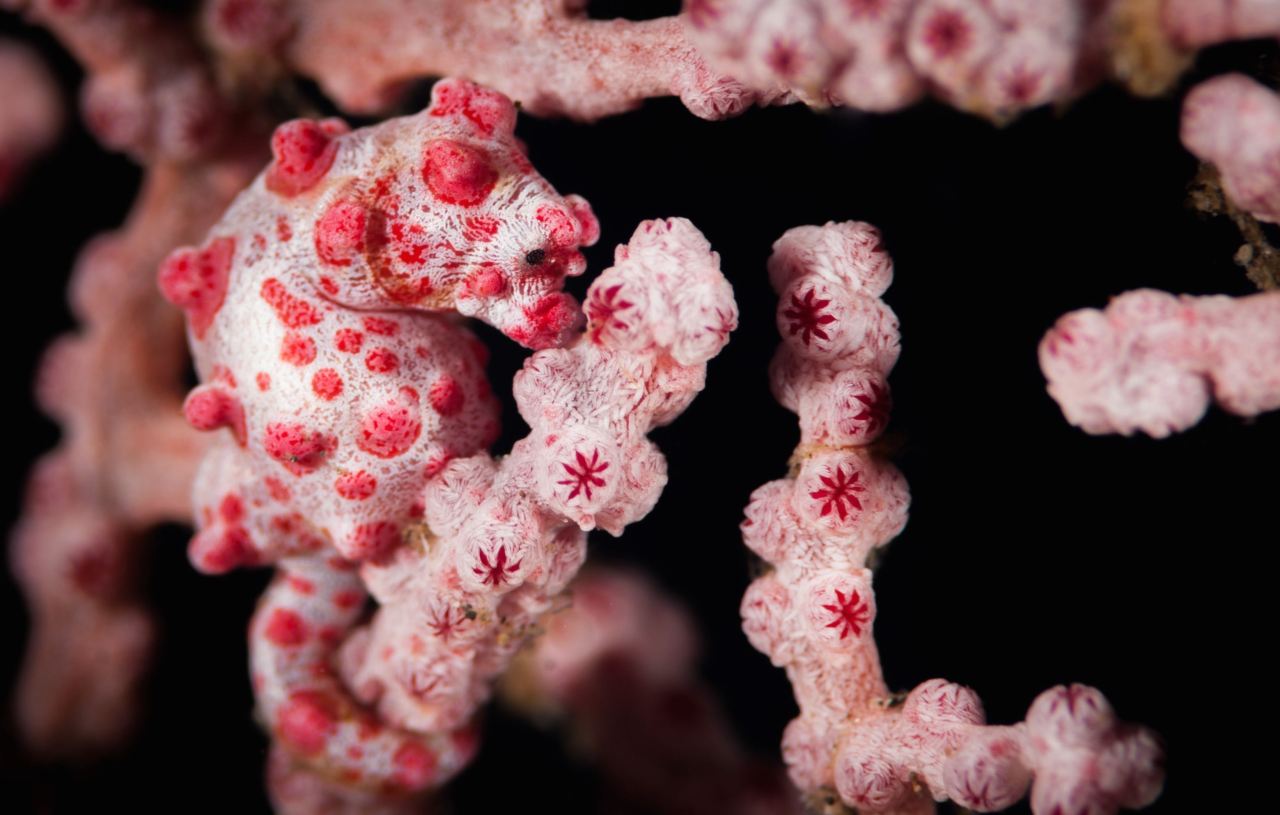
Tiny creature lovers, this very peculiar fish will definitely make your day if you come diving with Abyss Dive Center Bali. Only discovered quite recently, because of its size and its mastery of the art of camouflage, the pygmy seahorse is a real star of the underwater world of this part of Bali.
The species of pygmy seahorse you’re most likely to come across in Bali is the Hippocampus Bargibanti, discovered by accident in 1969 by a New Caledonian scientist. Why by accident, might you ask? Georges Bargibant, the aforementioned scientist, was actually studying corals, especially coral fans, and he happened to notice a pair of mysterious seahorses during a dissection in his lab. A year later, the species was officially recognised and named after Bargibant.
The particularity of the pygmy seahorse is that its body mimics the polyps of the sea fans on which it lives, pink or yellow, making it extremely difficult for divers to spot them. When pygmy seahorses are born, they are grey and float around freely. As they grow up, they choose a coral branch onto which they latch and will take its colour. They will then live forever on this sea fan. If they are driven out of their coral branch, they won’t be able to get back to it and they will die, as they are rather bad swimmers. Therefore, be extra careful around them so you don’t accidentally turn them away from their home.
Another distinctive feature of the pygmy seahorse is, as you may have guessed from its name, its size. They typically measure less than 2cm in height, which, combined with their natural camouflage, makes them even harder to spot.
To observe a pygmy seahorse, it can be really helpful to use a lamp since they really blend in with their surrounding. Sometimes, even very experienced divers can miss them. If it is a species you’re very interested in seeing while diving at Abyss Dive Center Bali, don’t forget to mention it beforehand so we can pair you with our best macro diving guides. A magnifying glass can also be a good tool to be able to really distinguish their shape and features.
Technically, as long as there are sea fans and that you’re in the Coral Triangle, to a depth lower than 13 meters, you have a chance to spot pygmy seahorses. At Abyss Dive Center Bali, we know for a fact that you can find them in 4 of the dive sites we offer:
However, if you wish to photograph the pygmy seahorse, remember that they don’t have eyelids which makes them sensitive to light. So consider using natural light to get their mugshot.
World’s best dad
Like every other species of seahorse, pygmy seahorses have a peculiar way of reproducing. Indeed, it is the female that impregnates the male with her eggs, where they will be fertilised by the male’s seed. When the time of birth comes, the soon to be new daddy expels from his pouch tiny fully formed seahorses. They will live in the open water for a while, feeding on plankton, before latching to a coral branch for life.
Pygmy seahorses usually live in clusters of up to 20 individuals on the same coral and will choose their mating partner among that cluster.
You can’t get caught if you don’t get found out
Considering their mastery at camouflage, pygmy seahorses have no known predator. That allows them to live a peaceful life on their twig and feed without concern. Indeed, the pygmy seahorse is an active carnivorous species that will put to use its symbiosis with the sea fans to eat its parasites and the tiny crustaceans that share its local habitat. Sounds like a good life to have!